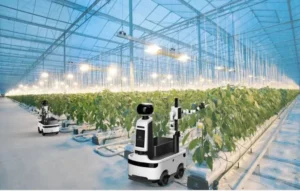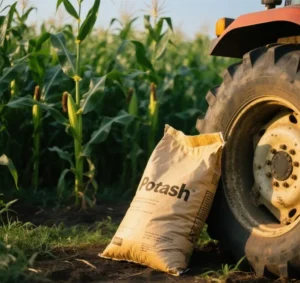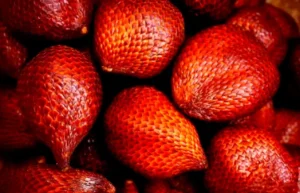Potassium (K) is one of the three primary macronutrients essential for plant growth, alongside nitrogen (N) and phosphorus (P). It plays a crucial role in enzyme activation, photosynthesis, water regulation, and disease resistance. Potassium fertilizers come in various forms, each with distinct properties and applications. Below is an overview of the main types of potassium fertilizers and their recommended uses.
1. Potassium Chloride (KCl, Muriate of Potash, MOP)
-
Chemical Formula: KCl
-
K₂O Content: 60-62%
-
Properties: Highly soluble, cost-effective, and the most widely used potassium fertilizer.
-
Usage: Suitable for most crops, except chloride-sensitive plants (e.g., tobacco, potatoes, grapes).
-
Considerations: Excessive use may lead to soil salinity and chloride toxicity.
2. Potassium Sulfate (K₂SO₄, Sulfate of Potash, SOP)
-
Chemical Formula: K₂SO₄
-
K₂O Content: 50-52%
-
Properties: Chloride-free, contains sulfur (17-18%), ideal for chloride-sensitive crops.
-
Usage: Preferred for fruits, vegetables, tobacco, and legumes.
-
Considerations: More expensive than KCl but safer for sensitive crops.
3. Potassium Nitrate (KNO₃)
-
Chemical Formula: KNO₃
-
K₂O Content: 44-46%
-
Properties: Provides both potassium (K) and nitrogen (N, 13%), highly soluble.
-
Usage: Ideal for fertigation and foliar application in high-value crops (e.g., greenhouse vegetables, fruits).
-
Considerations: Avoid excessive use to prevent nitrogen overloading.
4. Monopotassium Phosphate (KH₂PO₄, MKP)
-
Chemical Formula: KH₂PO₄
-
K₂O Content: 34%
-
Properties: Supplies both potassium (K) and phosphorus (P, 52%), highly efficient for foliar feeding.
-
Usage: Used in hydroponics, fertigation, and as a quick-acting foliar spray.
-
Considerations: Expensive but effective for correcting deficiencies rapidly.
5. Organic Potassium (Various Sources)
-
Sources: Compost, manure, plant residues.
-
Properties: Slow-release, improves soil structure.
-
Usage: Suitable for organic farming and long-term soil fertility.
-
Considerations: Lower K concentration compared to synthetic fertilizers.
6. Bio-Potassium (Microbial Potassium Mobilizers)
-
Sources: Potassium-solubilizing bacteria (e.g., Bacillus mucilaginosus).
-
Properties: Enhances natural potassium availability in soil.
-
Usage: Used in sustainable and organic agriculture.
-
Considerations: Requires healthy microbial activity in soil.
7. Potassium Humate
-
Sources: Derived from humic substances.
-
Properties: Enhances nutrient uptake and soil structure.
-
Usage: Used as a soil conditioner and foliar spray.
-
Considerations: Works best in combination with other fertilizers.
8. Potassium Fulvate
-
Sources: A fraction of humic acid with lower molecular weight.
-
Properties: Highly bioactive, improves plant metabolism.
-
Usage: Effective in foliar applications and seed treatments.
-
Considerations: More soluble than potassium humate.
9. Potassium Magnesium Sulfate (K₂SO₄·MgSO₄, K-Mag, Langbeinite)
-
Chemical Formula: K₂SO₄·2MgSO₄
-
K₂O Content: 22%
-
Properties: Supplies potassium, magnesium (11%), and sulfur (22%).
-
Usage: Ideal for magnesium-deficient soils (e.g., sandy soils).
-
Considerations: Slow-release, suitable for long-term soil improvement.
10. Wood Ash (Potassium Carbonate, K₂CO₃)
-
K₂O Content: 5-10% (variable)
-
Properties: Alkaline, also supplies calcium and micronutrients.
-
Usage: Traditional fertilizer for acidic soils.
-
Considerations: Overuse may raise soil pH excessively.
General Recommendations for Potassium Fertilizer Use
-
Soil Testing: Determine soil K levels before application to avoid over-fertilization.
-
Crop Requirements: Different crops have varying K needs (e.g., bananas, potatoes, and tomatoes are high-demand crops).
-
Chloride Sensitivity: Avoid KCl for chloride-sensitive crops; use K₂SO₄ or KNO₃ instead.
-
Application Timing: Apply before planting or during active growth stages.
-
Foliar Feeding: Use highly soluble forms (e.g., KNO₃, KH₂PO₄) for quick deficiency correction.
-
Combination with Other Nutrients: Balance K with N and P to avoid nutrient imbalances.
Conclusion
Selecting the right potassium fertilizer depends on crop needs, soil conditions, and economic considerations. While KCl is the most economical choice, alternatives like SOP, KNO₃, and organic sources provide specialized benefits for sustainable agriculture. Proper application ensures optimal plant health and yield.









